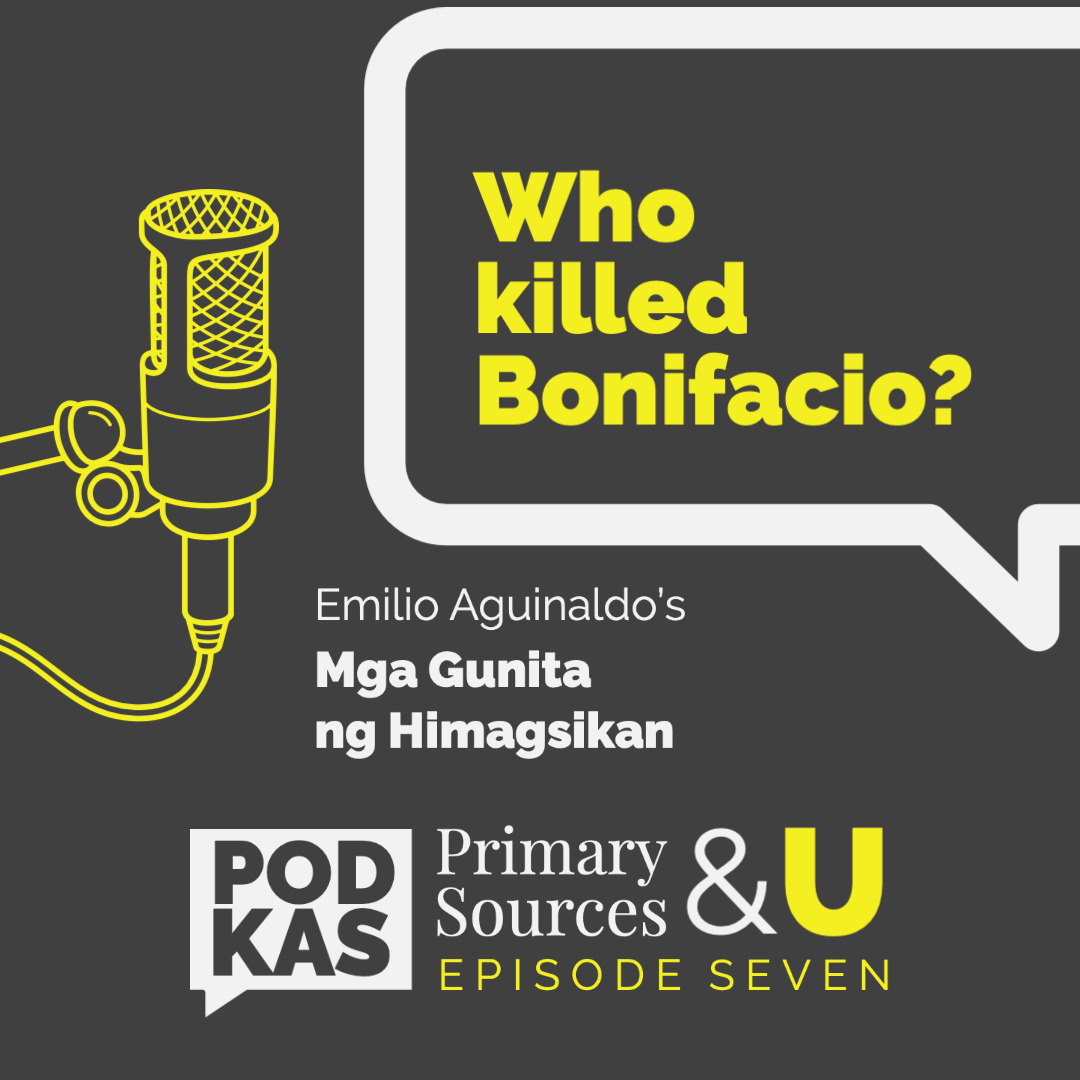ERAP, para nga ba sa mahirap? President Joseph Estrada’s Inauguration Speech
Against the backdrop of twenty-first century neoliberalism and worsening inequality rose Joseph "Erap" Ejercito Estrada, a movie-star turned leader that was loved by the people but was removed through a people power revolution. But before the scandal and controversy, what did Erap represent? How did he differ from his predecessors in the EDSA republic? All these and more in the season finale of Primary Sources & U!
May nagbago ba? Cory Aquino’s Speech in the US Congress
The focus of this season's penultimate episode is a speech delivered by Pres. Corazon Aquino in the U.S. Congress in 1986. Through this speech, we can see indications of her presidency’s agenda and ask: did things change after martial law? And was this change for the better? Let's find out.
Kailangan ba ng “Bagong Lipunan”? Marcos and the declaration of Martial Law
In this episode, we discuss how Ferdinand Marcos rationalized Martial Law through Proclamation No. 1081, or the declaration of Martial Law.
Whose guy is Magsaysay? Leon Ty’s It’s Up To You Now!
In this episode, we discuss one of the most prominent Philippine presidents of this period: Ramon Magsaysay, and the increasingly complex dynamics of US-Philippine relations with the Cold War as a backdrop. Whose guy really is Magsaysay? Let's find out.
Kalayaan nga ba talaga? President Laurel’s Inaugural Address, October 14, 1943
In 1943, almost two years after Japan launched a surprise attack, the Philippines was "granted" independence under Japan. How did this republic come to be, and how were politics under the auspices of Japan? Filipinos have indeed longed for independence, but is this the envisioned independence? We'll answer these and more as we look at Philippine independence sponsored by the Japanese Empire during World War II through a speech by Jose P. Laurel, President of the Second Philippine Republic.
Kalayaan… para kanino? Filipino grievances against Governor Wood
In this episode, we explore the dynamics of US hegemony in the Philippines as they occupied the country at the turn of the twentieth century. Of particular interest in this period are the quest for independence through political negotiations and the clash between the Filipino political elite and one very stern American governor-general, Leonard Wood. What were these grievances that Filipinos complained about, and were there different sides to this political scuffle in the 1920s? How did this impact the clamor for independence? And independence, for whom?
What led to June 12, 1898? The Declaration of Philippine Independence
What does it mean to be free? In this episode, we demystify some of the issues and misconceptions surrounding Philippine independence by reading the Declaration itself, authored by Ambrosio Rianzares Bautista.
Who killed Bonifacio? Aguinaldo’s Gunita ng Himagsikan
In this episode, we shed light on some of Philippine history's most contentious controversies: the Magdiwang-Magdalo rivalry and the Tejeros Convention, precursors of Bonifacio’s execution, by reading Emilio Aguinaldo's Mga Gunita ng Himagsikan.
Papasa ka ba sa Katipunan? Emilio Jacinto’s Liwanag at Dilim (1896)
Aside from writing the Kartilya ng Katipunan, Emilio Jacinto also wrote Liwanag at Dilim, which detailed the political philosophy of the Katipunan as a movement and an organization, and served as proof why Jacinto has been known to be the "brains of the revolution." We talk about this and more in this episode of PODKAS.
What did the traveler say? John Foreman’s The Philippine Islands
What's so special about the nineteenth century? Why do scholars call it "the long century," when all centuries are... a hundred years? Why will our great revolutionary heroes appear in this period? And why so many questions? We'll answer all these by reading an outsider's perspective of the Philippines in this century: the British merchant John Foreman and his work, The Philippine Islands (1890).
Sasakay ka ba sa Galleon? De Morga’s Sucesos de las Islas Filipinas
As soon as a return route from the Philippines to the Americas was established, Spain launched its major scheme to maximize the profits they can get by having a colony in the "far east:" the Galleon Trade. In Manila, galleon ships were loaded mostly with Chinese goods, and traveled to Acapulco, Mexico, crossing the vast Pacific Ocean. Join us as we learn about this trade that lasted for more than two centuries by reading Antonio de Morga's Sucesos de las Islas Filipinas in this new episode of PODKAS.
Timawa ka ba? Juan de Plasencia’s Customs of the Tagalogs
In this episode, we talk about the Franciscan friar Juan de Plasencia’s Relación de las Costumbres de los Tagalos, more popularly known as Customs of the Tagalogs to explain how they saw the indigenous political and social organization of the Tagalogs, including some choice descriptions of indigenous spirituality.
Who “discovered” the Philippines? Pigafetta’s First Voyage Around the World by Magellan
It all begins with an idea.














